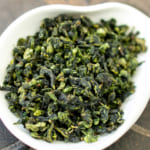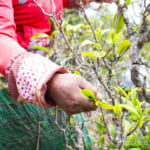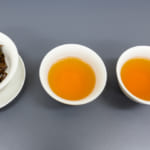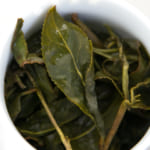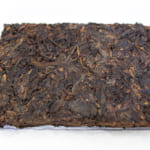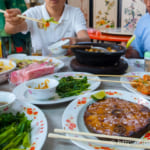- HOME >
- Origin of Tea
2017 Spring Tea from Tsukigase in Nara
- [2017.06.16] Posted By Akira Hojo
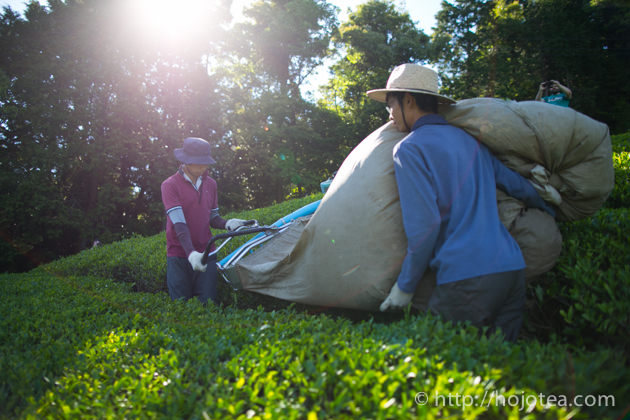
I have visited Tsukigase in Nara to survey the progress of spring tea and their production. It was just in the mid of tea season. I met with our tea manufacturer and we exchanged a lot of innovative ideas regarding tea processing, and I inspected the outcome of the experimented teas. This year we are planning to introduce a few types of tea from Tsukigase.

We specially requested seedling tea
Our tea manufacturer in Tsukigase strictly practices natural farming method. They are totally not using any pesticide. In addition, they never use any nitrogen fertilizer. They will only use the compost produced from the surrounding weeds.
Our tea comes from the tea garden that is specially dedicated for us. Every year our tea is collected from the same garden.
We are very particular about the tea from the tea tree grown with seedling method. Seedling means tea tree is planted from a seed. Nowadays, it is very rare to have tea tree grown with seedling method. Normally, most people are interested with the cultivated tea such as Yabukita, Sayama-Kaori or Okumidori. With the seedling method, the roots of the tree are growing straight under the ground. The roots are very long and it grows deep. It absorbs mineral very effectively.
As for the cultivated tea, it is propagated by sticking. The root grows wide and shallow; the roots spread widely under the surface of the ground. It is very less effective to absorb minerals, as the root is not deep enough; instead it is very suitable to absorb fertilizer.
I always emphasize on minerals and poly phenol content in tea. These substances directly affects to the after taste and clarity in taste. In Japan, the tea grown with seedling method is called Zairai. Sometimes people called it as Zairai cultivar. But it is incorrect way to use these words. Zairai is the seedling tea, whereas cultivar refers to cultivated tea propagated by cutting and sticking the tea twigs from the mother tree.
This year we have requested the following teas:
Black Tea with muscatel flavor
We newly added a black tea from Tsukigase. This Tsukigase Black Tea is custom-made following my own criteria. I requested very long withering until it produces strong sweet aroma like those sweet fragrance we experienced when we produced white tea in Yunnan. In order to enhance the effect of the long withering and bring up the strong muscatel flavor, we optimize the fermentation process to a minimal level. Usually, the strikingly sweet fruity flavor will diminished if the fermentation process is too lengthy.
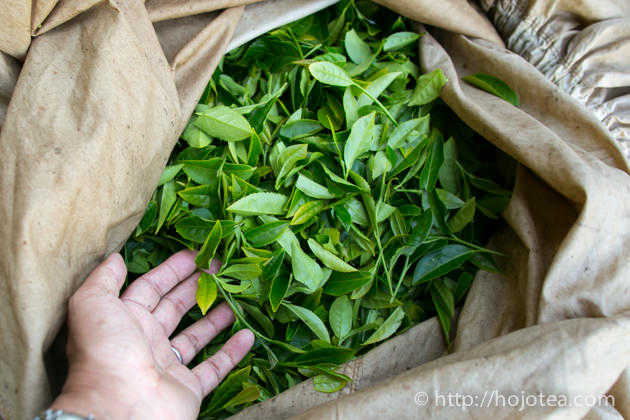
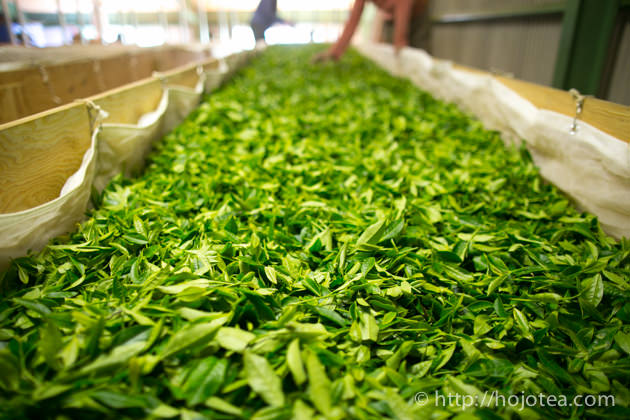
Withering

Fermentation
Tsukigase Asamomi Sencha
Asamomi in Japanese means light rolling. In processing Japanese tea, the rolling process involves a lot of heat. During the rolling process, hot air is constantly blown. As a result, the flavor of tea is oxidized due to the heating, and the more rolling involves, the extent of oxidation increases.
Our aim is to have Japanese green tea that retains the fresh tea leaf flavor and lasting for multi-brewing. As such, we designed the process to make the lightly-rolled sencha. This year we made some improvements. We placed the fresh tea leaf in the forest for a day to conduct the natural withering process. In addition, we drastically shorten the steaming process in order to minimize the distraction of flavor. As a result, we achieve very fresh floral flavor with Tsukigase Asamomi Sencha.
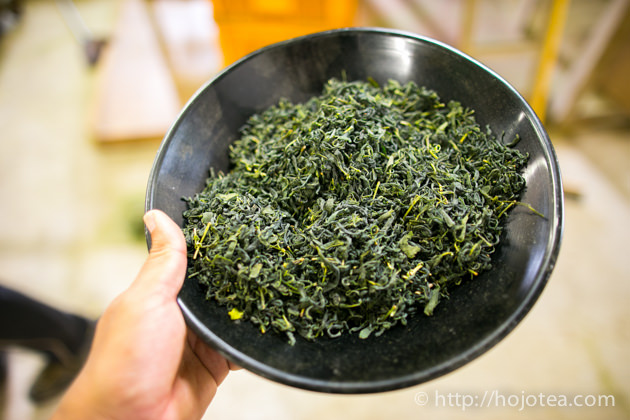
Tsukigase Zairai Sencha
This is our standard lineup that we have been introducing it in the past several years.
In a few hundred million years ago, Tsukigase was at the bottom of Biwa Lake. Biwa Lake is the biggest lake in Japan. Now it is located in the Northern part of Shiga prefecture. Since Biwa Lake has disappeared from Tsukigase area, the land has changed a lot by river erosion.
Now if we visit Tsukigase, we will notice a number peaks of small mountains. Interestingly, the height of those small mountains are the same. In fact, the peak of those mountains are exactly where used to be the bottom of the old Biwa lake. So it is very important to choose the tea garden that is located around the peak of those small mountains.
Every year our tea manufacturer reserve one of the specific tea gardens from these small mountains for our Tsukigase Zairai Sencha. Thanks to the soil that is rich in minerals, seedling tea tree and natural farming practice, tea does not gives Umami at all like ordinary sencha, instead it gives very clear and floral scent. We love this tea because of long-lasting flavor and sweetness with a clear and refined drinking sensation.
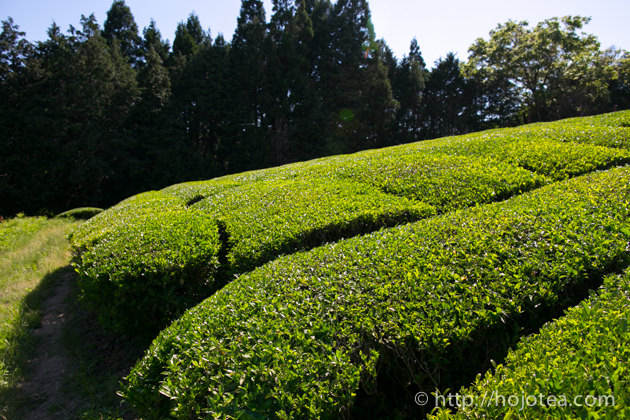
Tea garden right after the harvest.
Related Articles
How to get the latest update on HOJO Tea?
1. Follow Twitter, 2. Click "Like" on Facebook, and 3. Subscribe in newsletter. You can have the latest tea news from HOJO Tea.
 Subscribe the Newsletter to enjoy the privileges
Subscribe the Newsletter to enjoy the privileges- You may receive a free sample upon purchase, or you may have the priority to purchase special products. So please remember to subscribe our newsletter as well as the social network.
- New Release of Anxi Traditional Oolong
- Anxi, located in Fujian province, China, is celebrated for its Tie Guan Yin tea. However, the Traditional Anxi Oolong from this region boasts a unique fruity aroma, distinguishing it from Tie Guan Yin. Anxi: A Renowned Hub for Oolong Tea Production in China Fujian Province, renowned for its rich tea heritage, boasts several prominent tea-producing …
- New Release of Lan Yun Tie Guan Yin from Anxi
- Lan Yun Tie Guan Yin from Anxi, is not just an ordinary Tie Guan Yin. It has a strikingly delightful flavor reminiscent of orchid flowers with silky-soft drinking sensation. Anxi, renowned as one of the three major Oolong tea production regions in China. Anxi is recognized as one of the three major Oolong tea-producing regions …
NEW ARTICLES
 New Release of Anxi Traditional Oolong
New Release of Anxi Traditional Oolong- Anxi, located in Fujian province, China, is celebrated for its Tie Guan Yin tea. However, the Traditional Anxi Oolong from this region boasts a unique fruity aroma, distinguishing it from Tie Guan Yin. Anxi: A Renowned Hub for Oolong Tea Production in China Fujian Province, renowned for its rich tea heritage, boasts several prominent tea-producing …
 Yunnan 2024 Spring Tea Sourcing
Yunnan 2024 Spring Tea Sourcing- Yunnan Province is globally renowned for the exceptional quality of its tea leaves. However, lax production management often presents challenges in achieving the desired tea quality when relying solely on pre-made teas. To address this issue, we have committed to remaining on-site throughout the spring season to closely monitor tea production. We are meticulously inspecting …
 The Relationship Between Greenness of Tea Leaves and Fertilizer
The Relationship Between Greenness of Tea Leaves and Fertilizer- For both tea and vegetables, there’s a common misconception that a deeper green colour indicates better quality and greater health benefits. However, this isn’t always the case. Natural plants often have a yellowish-green hue rather than a vibrant green. If you observe wild plants in grasslands or along roadsides during spring, you’ll notice that they …
 Creating Muscatel Black Tea Using a Unique Blending Method
Creating Muscatel Black Tea Using a Unique Blending Method- I would like to introduce the unique creation of black tea with a distinctive muscatel flavor profile. Acquiring Exceptional Mi Xiang Black Tea Have you ever heard of a unique black tea called “Mi Xiang Black Tea” or “Muscatel Black Tea”? This tea is crafted from leaves that have been delicately nibbled by leafhoppers, resulting …
 New Release of Lan Yun Tie Guan Yin from Anxi
New Release of Lan Yun Tie Guan Yin from Anxi- Lan Yun Tie Guan Yin from Anxi, is not just an ordinary Tie Guan Yin. It has a strikingly delightful flavor reminiscent of orchid flowers with silky-soft drinking sensation. Anxi, renowned as one of the three major Oolong tea production regions in China. Anxi is recognized as one of the three major Oolong tea-producing regions …
 The Difference Between Fermentation in Tea and Fermented Foods
The Difference Between Fermentation in Tea and Fermented Foods- Black tea and oolong tea are often categorized as “fermented teas,” but the extent to which they undergo fermentation raises questions about whether they truly qualify as fermented foods. In this article, I endeavour to offer a thorough exploration of the distinctions between tea and traditional fermented foods, shedding light on the nuances of their …
 Easy Way to Prepare Flavorful and Warm Tea at the Workplace
Easy Way to Prepare Flavorful and Warm Tea at the Workplace- Have you ever experienced the transformation of tea stored in a thermos or water bottle at work, turning into a brown hue and acquiring a bitter, astringent taste? As this has piqued the interest of many, I would like to offer a more in-depth explanation for a solution. Tea stored in a thermos undergoes oxidation …
 The new release of Bao Dao Shan Da Cha Tou Brick 2017, exclusively crafted from Da Cha Tou leaves
The new release of Bao Dao Shan Da Cha Tou Brick 2017, exclusively crafted from Da Cha Tou leaves- Bao Dao Shan Cha Tou Zhuan 2017 is a ripe pu-erh tea crafted into brick form. Bao Dao Shan is the name of the mountain situated in the southwestern part of Yunnan. “Cha Tou” denotes a distinctive type of ripe pu-erh tea. In the course of fermenting spring tea, certain tea clumps naturally develop, known …
 We released Lapsang Suchong Qi Zhong Classic: Premium Lapsang Souchong
We released Lapsang Suchong Qi Zhong Classic: Premium Lapsang Souchong- Lapsang Souchong is one of the earliest known black teas distinguished by a unique production method and flavour profile. Its origins are often linked to the Wuyi Mountains in China’s Fujian province, where Lapsang Souchong is traditionally crafted. Black tea production in the Wuyi region has a history dating back several centuries. Lapsang Souchong tea …
 Regular Consumption of Umami Seasoning Can Influence Taste Preferences
Regular Consumption of Umami Seasoning Can Influence Taste Preferences- Excessive consumption of artificial condiments, such as umami seasonings, is believed to influence one’s taste and preferences. I’d like to share my own view to explore how an overabundance of condiments can indeed influence one’s palate. Umami Seasonings Are Prevalent in Asian Countries I spend half of the year living abroad, particularly in China and …
Shop Info

Address:Lot No. T-215, 3rd Floor, The Gardens Mall, Mid Valley City, Lingkaran Syed Putra, 59200 Kuala Lumpur
Tel: +603-2287-4537
Business Hour: 10am to 10pm
Category
- New Arrival at HOJO Online Shop
- Featured Articles
- Newsletter
- Types of Tea
- Origin of Tea
- Teapot and Tea Equipment
- Tea Column
- How to enjoy tea
- Tea Processing
- How to choose quality tea
- Tea constituents and functional effect
- Safety of Tea
- Foods
- Tea Business Operation
- Hobby and Outdoor Activity
- Ranking of Tea
- Video
- FAQ
- Media Release
Profile

- AKIRA HOJO
- I invite you to experience my tea selections.I was born in Nagano, Japan. In university, I studied agricultural chemistry, and I have the master degree in food science. I worked in Japanese food industry for 10 years. I involved in R&D, QC and QA. As a factory manager, I implemented ISO9000 series and managed the factory.
- The Art of Tea Magazine
- We posted the article on “The Art of Tea Magazine No.9, the magazine is published in Taiwan. We featured some scientific view about the tetsubin
- New Straits Times
- The Malaysian National Newspaper, New Straits Times featured HOJO Tea on 17-Oct-2007.





